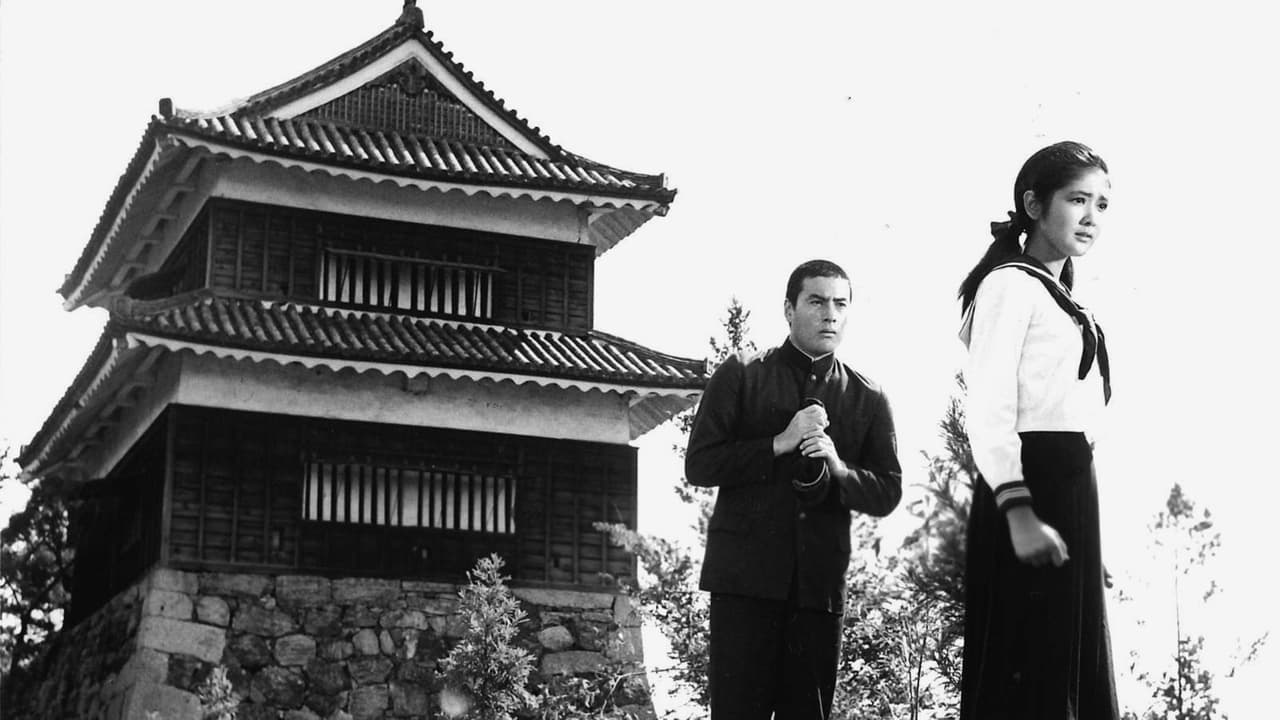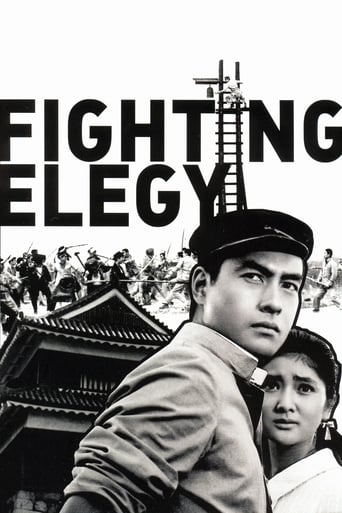Konterr
Brilliant and touching
KnotStronger
This is a must-see and one of the best documentaries - and films - of this year.
BelSports
This is a coming of age storyline that you've seen in one form or another for decades. It takes a truly unique voice to make yet another one worth watching.
Hadrina
The movie's neither hopeful in contrived ways, nor hopeless in different contrived ways. Somehow it manages to be wonderful
ebossert
It has become clear that Seijun Suzuki is the Wong Jing of Japan, sporting an equally lame sense of "humor" that consists of hysterical behavior and incessant screaming within poorly constructed, thoughtless scenarios. It's no wonder this idiot got canned by Nikkatsu and subsequently blacklisted after his lame crapfest "Branded to Kill" (1967), which showcased ineptly constructed shootouts, gratuitous sexual content, lots of bad acting, and a preposterous ending with some dimwit acting hysterical in a boxing ring. If a director of mine dropped that pile of elephant compost on my desk, I'd fire his ass too.As a viewer, I was unlucky enough to experience Suzuki's "Pistol Opera" (2001) first, which still holds the dubious record for "Worst Movie Ever Made" in my book. With "Princess Raccoon" (2005), however, Suzuki proved that his abject stupidity could yield a flawed, yet moderately entertaining film, but my patience is running thin. I've got lots of Asian movies to watch, and I don't like wasting my time with directors who have a 33% success ratio. "Fighting Elegy" (1966) just made it 25%.At no point is this movie remotely funny or engaging. It uses the "40-year-old acting like a juvenile child" gag that – in and of itself – is utterly lame and it just grates on the nerves from the very first minute. Characters have zero complexity and the fight scenes are a disgrace in their artificiality and persistent use of biting, nosepicking, and people falling over each other. None of the fights look real and seem to be the victim of incompetent directing as the baddies look as if their swatting flies the entire time. The camera-work uses amateur ploys like random closeups and rapid editing for no apparently good reason. These tactics are sure fire points of condemnation when presented in modern day films, but somehow magically become "brilliant" and "masterful" when presented in a Japanese film released before 1970. Go figure.Don't misunderstand me, because I really do like pre-1970 Japanese cinema. Seriously, I do. For example, of the 17 Yasujiro Ozu films I've had the pleasure of seeing, 4 were excellent, 5 were very good, 6 were good, and 2 were mediocre. That's an 88% success ratio, which means that I froth at the mouth to watch more of his films. However, the difference between a great director like Ozu and low-talent assclowns like Seijun Suzuki and Akira Kurosawa is that Ozu is capable of directing actors properly and understands that quaint realism can supersede thoughtless hysterical behavior and/or melodramatic fluff.On a side note, I fired up a few of Suzuki's interviews that were included as special features on the DVD releases. It's uncomfortable hearing him pat himself on the back while gloating about the fact that he focuses on entertainment value first and foremost. The problem is that Suzuki's idea of "entertainment" results in contrived silliness mixed with uninteresting, undeveloped content. I fear that the only reason "Princess Raccoon" worked as an entertainment vehicle was because it had an implicitly interesting premise and was structured within a self-referential fantasy world where contrivance felt natural. Perhaps Suzuki should make another stage-play style musical, because his attempts at real life humor are abysmal and shallow at best.
MARIO GAUCI
This was only my fourth Seijun Suzuki film - after TOKYO DRIFTER (1966), BRANDED TO KILL (1967) and PISTOL OPERA (2001) - and it's a typically energetic outing, with strong doses of comedy augmenting the character study of a young man who can only express himself adequately through violence and how he is forced to take stock of his life after falling in love with a cultured young girl. Drawing obvious parallels to FIGHT CLUB (1999), the film's fight scenes are quite well done but, even more interestingly, it looks forward to the struggle between religious faith and a violent environment that would surface in later films, primarily the work of Martin Scorsese (the script of FIGHTING ELEGY was penned by Kaneto Shindo, director of THE NAKED ISLAND [1960] and ONIBABA [1964]!). However, the film runs out of steam towards the end by taking an unexpectedly serious (and propagandist) turn which doesn't sit comfortably with the anarchy that had gone on before!
Colashwood
* minor spoilers * Fighting Elegy is the crowning feature of a 6 DVD package of Suzuki's work (also featuring the wacky Tokyo Drifter and similar gems), released in 2003 in France (region 2, French subtitles only). Wonderfully shot in black and white, with a swiftness and a brutality one finds more and more disturbing as the (very grim) end nears... It indeed reminded me of Ferdydurke (the book, not the film, which was rather a disappointment), with its mixture of male hysteria, repressed sexuality and elegance. (And it is an additional pleasure to think that Suzuki Seijun is still around !)
scottbaiowulf
Even though it suffers from acute VBS (Vinnie Barbarino Syndrome, i.e. all the "schoolchildren" are Thirtyish), this tale of burgeoning adolescent sexuality and burgeoning adolescent aggression is both funny and powerful. Directed by Suzuki Seijun [Tokyo Drifter, Branded to Kill] and scripted by Shindo Kaneto [who was in turn the director of Onibaba], Elegy to Violence has a lot more to say about conformity and militarism than allegedly profound films like Teshigihara's Face of Another.As the young lad torn between swooning adoration for his Catholic girlfriend and the sense of power and purity he finds in paramilitary gangs, Hideki Takahashi overplays marvelously. He is an encyclopedia of twitches and cringing at first, but that gradually gives way to ridiculous hypermachismo as he gets into more and more fights. (or, as the subtitles put it, "scuffles")Seijun Suzuki shows that he is keenly aware of the absurdity that underlies all of that hyperbolically heroic bloodshed that makes his other films so sublime.But those of you just looking for your fix of hip 60s cinema won't be disappointed--with cartoonish sound effects, brutal action, stoned continuity, split screens, sudden fits of slapstick worthy of The Knack or Help!, and immortal lines like "Your manhood will cry if you are afraid" and "Oh Michiko, I do not masturbate--I FIGHT!", how can you go wrong?Watch for the scene in which Our Hero climbs a watch tower to witness a "scuffle" that he himself fomented--an explicit homage to Yojimbo.

